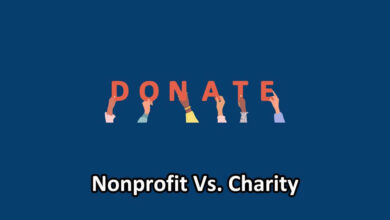In the complex landscape of financial transactions and agreements, the terms “pledge” and “collateral” play pivotal roles, shaping the dynamics of contracts and obligations. Understanding the nuances between them is crucial for both lenders and borrowers, as it directly influences risk management and the security of financial dealings.
These concepts are linchpins in various financial dealings, such as loans, mortgages, and investments. Proper comprehension ensures that parties involved are aware of their rights, responsibilities, and the potential consequences of default.
Pledge Vs. Collateral (A Comparison)
| Pledge | Collateral |
|---|---|
| A pledge is a financial arrangement where the borrower transfers possession of a valuable asset to the lender as security for a loan. | Collateral involves providing assets, often of significant value, to a lender as security for a loan. |
| In a pledge, the transfer of possession is a fundamental aspect, requiring the pledgor to physically hand over the asset, providing the lender with direct control and assurance. | Collateral may not demand such physical possession, allowing for a more diverse array of securing mechanisms that go beyond direct control. |
| In a Pledge, pledgor retains ownership rights in a pledge, ensuring that despite surrendering possession, they maintain legal ownership. | Collateral often necessitates a transfer of ownership rights to the lender, providing additional security for the loan. |
| The pledgor has the opportunity to reclaim the pledged asset once they fulfill their financial obligations, reinstating their ownership and control. | In collateral arrangements, the lender reserves the right to sell or utilize the asset to recover losses in case of default, limiting the borrower's ability to reclaim the asset after a breach. |
| It commonly involves financial instruments such as stocks or bonds, where the intrinsic value lies in the financial market. | It offers a broader spectrum, encompassing tangible assets like real estate and equipment, providing a more flexible collateral base for securing loans. |
| Pledges find prevalence in financial markets, particularly in scenarios like margin trading, where securities are pledged to secure a loan. | Collateral is widely employed in traditional loans and mortgages, extending beyond financial markets to secure a diverse range of credit transactions. |
What is a Pledge?
A pledge, in financial terms, refers to the act of offering a valuable asset as security for a loan or obligation. It involves the transfer of possession without a transfer of ownership, highlighting a temporary arrangement to secure a debt or meet a contractual obligation. Typically, this asset can be reclaimed by the pledgor upon fulfilling the agreed-upon terms.
Legal Aspects and Obligations Related to Pledges
From a legal perspective, pledges are bound by specific obligations. The pledgor retains ownership rights but is obligated to maintain the asset’s value and ensure it remains free from other claims.
Failure to fulfill the terms of the agreement may result in the pledged asset being seized by the pledgee to satisfy the debt or obligation.
What is Collateral?
Collateral, in financial terms, refers to assets or property offered by a borrower to a lender as security for a loan. Unlike a pledge, the transfer of possession is not always necessary; however, the lender gains a security interest in the collateral.
If the borrower defaults, the lender has the right to seize and sell the collateral to recover the outstanding debt.
Legal Aspects and Obligations Related to Collateral
Legally, collateral agreements involve granting a security interest or lien to the lender. This grants the lender specific rights over the collateral. The borrower is obligated to maintain the collateral’s value, and in the event of default, the lender has the legal right to seize, sell, or otherwise use the collateral to satisfy the debt.
Key Differences Between Pledge and Collateral
- Ownership Rights: In a pledge, the pledgor retains ownership rights, whereas collateral often involves a transfer of ownership rights to the lender.
- Reclaiming the Asset: The pledgor can reclaim the pledged asset after fulfilling obligations, but in collateral, the lender may sell or use the asset in case of default.
- Typical Assets: Pledges commonly involve financial instruments, while collateral can range from real estate to equipment, offering more flexibility.
- Usage Scenarios: Pledges are prevalent in financial markets. On the other hand, collateral is widely used in loans and mortgages.
Similarities and Overlapping Concepts
A. Areas Where the Concepts of Pledge and Collateral Intersect
Both pledge and collateral share the common ground of providing security for financial transactions. They aim to mitigate the risk for lenders and ensure a source of recovery in case of default.
B. Instances Where Both terms Might be Used in Conjunction
In complex financial agreements, it’s not uncommon to encounter scenarios where a pledge and collateral work in tandem. For instance, a borrower might offer a valuable asset as collateral while also granting a pledge on additional financial instruments to secure a comprehensive agreement.
Conclusion
In conclusion, mastering the distinctions between pledge and collateral is vital for anyone navigating the intricate realm of financial transactions. Whether you’re a lender safeguarding investments or a borrower seeking funds, a nuanced understanding empowers you to make informed decisions, mitigating risks and fostering financial security.
As the landscape evolves, so does the importance of comprehending these fundamental concepts, ensuring the stability and integrity of financial dealings.



